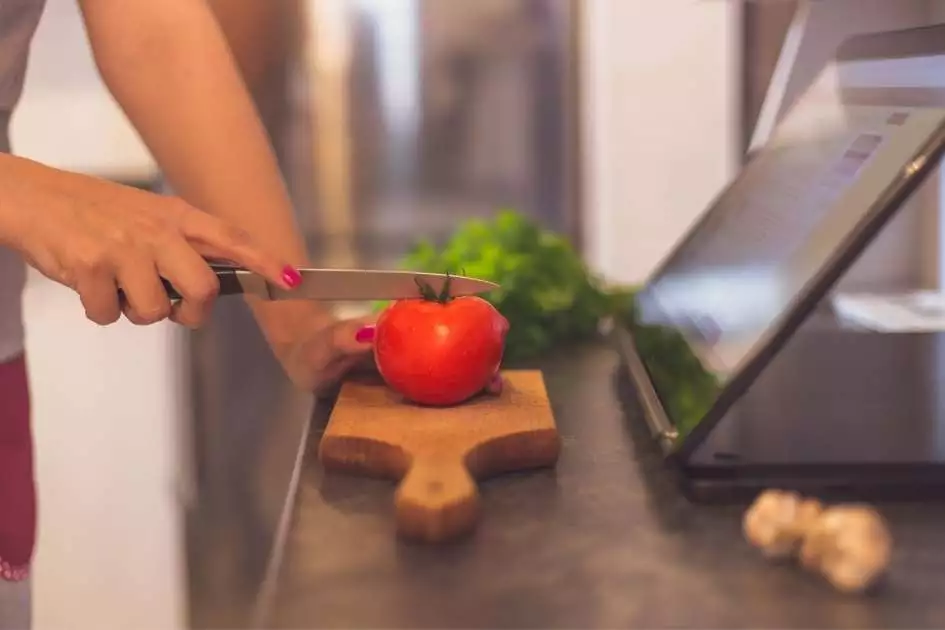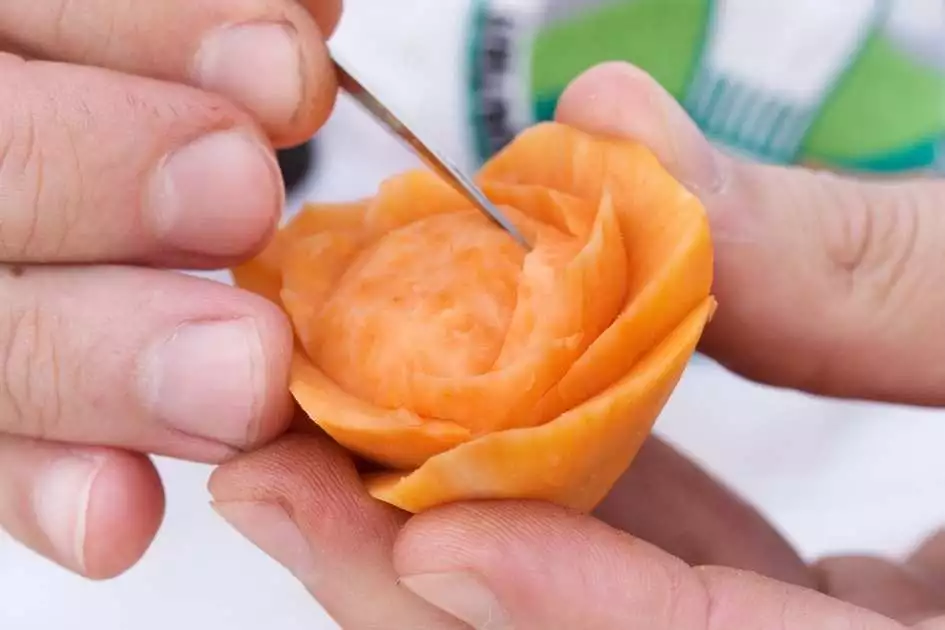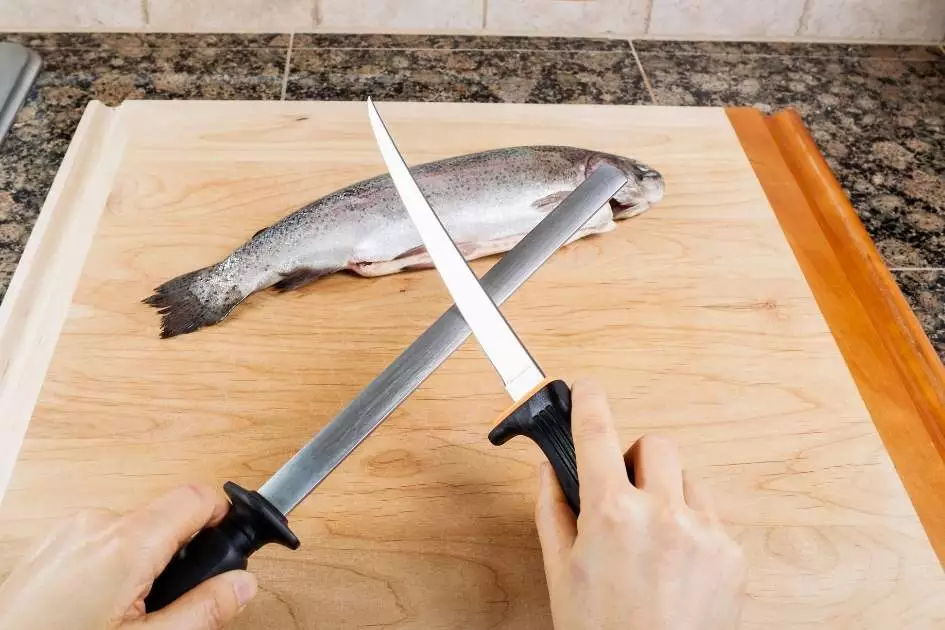Knives are some of the most common kitchen tools that we use every day. They can also be one of the most dangerous, so it's important to know how to keep your whole family safe when they're in use. This blog post will cover what you need to do before using a knife around children, as well as tips on how to teach kids about knives and safety. We'll even share with you some of our favorite easy recipes for kids!
The majority of kitchen knife accidents happen because people do not know how to properly handle them – so before using your new tools, learn about basic safety precautions and practice on some old veggies instead of cutting up ready-to-eat foods. It is extremely important that you take great care when handling these implements since they can cut through just about anything! Be sure to always keep sharpened units in a safe place with limited access for children and pets. If possible it would be best to buy an extra one (or more) if you plan on regularly cooking multiple things at once; this way there will always be a clean knife on hand to use.
Always use a cutting board.
It's matter to protect your countertop and the knife itself. Use a board that is large enough to hold whatever you are cutting in one place; it can be hard to cut properly when working with small boards, especially if they're flimsy or not designed for chopping. You might also try a wet cloth under your board to prevent it from sliding.
Pay attention not to cut things on the countertop or table that you don't want to end up in your food. This is why many people keep cutting boards specifically for meats and vegetables; even if they look clean, bacteria can linger inside porous wooden surfaces so be sure to use the right tools for the job.
Use knives for their intended purposes.
You will get the best results and not risk injuring yourself if you use a sharp knife to cut through meats or vegetables; never try to pry things open with it, since this can damage your blade and cause injuries! The last thing any cook wants is to have his/her favorite cooking tools damaged by misuse, so make sure you always practice safe and responsible knife use.
For instance, use a fillet knife if you are working with fish or meat, and a bread knife if you want to slice through crusty loaves of bread. If you're feeling overwhelmed by all your options, don't hesitate to ask us or your local housewares store staff for help in picking out the appropriate knives for your needs!
Never reach over food with your knife when cutting.
It makes driving dangerously close to the edge of the board where people might stand on one side while you're slicing from behind. Always keep a safe distance between yourself and other people at all times – even friends may find this difficult for reasons we'll discuss later! When kids learn about knives, they should always sit down while using them so their arms won't accidentally swing out into someone else who is standing next to them (or be tempted to jump up and try to help you!).
When prepping food, always keep the pointy end of your knife facing away from you.
This is an easy way to remember this safety tip! It's important that your blade never faces toward people since it can easily cut them if they're not careful. Even if someone just walks by behind you while you are chopping something on a table or countertop, be sure to turn it around so their hands don't accidentally touch anything sharp as they pass by! This may sound like common sense but many accidents happen because people forget these simple steps – even with friends who have been in the kitchen with us for years.
Keep knives sharp by sharpening them on a periodic basis.
Sharp knives are much safer to use than dull ones because they require less pressure and strength for cutting. But be sure you know how to sharpen your own blades before attempting this – if an expert or santoku knife sharpener is needed, it would be best to hire someone with experience instead of trying this on your own!
Sharpening frequency will depend on how often you use your knives, but it is generally recommended that they be sharpened at least once every year.

Store knives in a knife block or drawer that can't be easily accessed by children.
Remember, kids like things that glitter! The best way would be in an enclosed counter unit which has child-proof latches, but if this isn't possible make sure all knives are put away immediately after use inside drawers without jagged edges or loose hinges.
The most important thing about teaching kids how to responsibly handle kitchen tools like knives is consistency. example never allow older children to handle knives without supervision or let them use tools that might be too big for their hands. If you are teaching little ones to cook, keep the instructions simple and only involve one tool at a time until they get used to it.
If your child is old enough (and has asked!) then take them shopping with you so that they can pick out their own set of knives; this will help children become more engaged in what you're doing in the kitchen! This way kids feel like part of the process, which makes cooking fun while also teaching important safety lessons about respecting sharp objects.
Teach kids about the dangers of handling kitchen knives around food.
It's all too easy for little hands to reach out while adults are cooking in order to grab something that looks interesting, so make sure that children always stay at least three feet away from any hot stovetops or plates/bowls filled with ingredients used during meal preparation. At first, explain why these precautions are necessary; once they learn more about knives and how they can hurt people if used improperly, you will be amazed at what the power of knowledge can do!
Never put your fingers on the blade.
Even when you are cleaning it. If the knife slips, your fingers will be right in its path and can easily get cut! It's also important that you do not try to catch a falling blade with dirty hands; use tongs or something similar instead.
Put away all utensils and appliances before you start cooking, including electric mixers, blenders, ovens, etc.
This is especially important if you have kids or pets running around the house! If food has just been prepared, then it's best to store all knives and tools away before turning on loud appliances like blenders for this reason.
Clean up as you go - don't leave dishes in the sink or dirty clothes lying around.
It's hard to stay on top of a kitchen if you don't have the basics down, so be sure all dirty dishes are taken care of before starting any new tasks. Cleaning up as you go not only makes it easier to start fresh but also prevents accidents from happening.
Before using a new knife, wash it first.
Always wash a new knife before using it for the first time to remove any oils, residues or packing materials from when they were manufactured! It's also best to buy knives only from reputable companies and manufacturers with good reviews because cheaper brands may have loose blades which can easily snap off while being
Never attempt to catch a falling knife.
Even if you think it's just bouncing off of something, don't do that!
This one is pretty self-explanatory – unless you're wearing protective gear there's no way to avoid an injury! Some people go as far as keeping different colored plates or mats around specifically so that they can identify where knives are at all times, but it's best to just keep everything in drawers unless you're actively using them.
Never cut towards yourself with a knife.
Always push food away from you with the back side of the blade to avoid any injuries!
Cut away from your body and make sure you hold the handle tight while using a knife to prevent it slipping out of your hands. The best way to cut is by pushing down on the blade with one hand and moving forward as needed; this prevents accidents if food gets stuck or slips off, which can happen once in awhile.
Knives should not be placed near the edge of a countertop.
It's best to avoid placing knives near the edge of a countertop or any other surface in order to prevent accidents from happening; it only takes one mistake and you could end up with an injury (or worse) before you know what hit you.
Don't hand a knife to someone else.
It's best to never hand a knife over directly to someone else because it makes them much more susceptible to injuries! You can still give the other person what you want by placing the blade down on a clean surface and passing them something from there.
Best Cutting Techniques
Knife Techniques are often used when preparing food. The knife is held in one hand and the other hand can be used to guide it or press down on top of what you're cutting. When using this technique, your knuckles should always be facing towards your body so that if they slip off the knife, they'll make an impact with your body instead of the surface you're putting on. Be aware though, if you are using a sharp knife, this technique can be very dangerous because to guide it properly, your fingers need to touch the blade and could easily get cut.
Bridge Technique
It is a great technique for those who are beginning to learn how to slice and chop. The knife is held in one hand, but this time the knuckles face away from your body as you're holding it over whatever you're cutting. This gives more of an open view of what you're doing and allows better visibility than before. It also provides stability of the knife, so it's harder to lose control.
Claw Technique
This technique is very similar to the Bridge technique except that your knuckles face towards you as if they were claws on a hand and it allows for more accuracy than traditional methods. It can be difficult to master at first but once you've got used to using this technique, it will be a breeze and you'll find yourself chopping food in no time.
Pinch Technique
This technique is used to cut very small items by holding the tip of the blade with your thumb and forefinger. It's like using a pen for fine detail work, but instead, you're cutting something up!
Cross Chop Technique
This is a very simple way of chopping food. The knife is held in one hand and the other hand holds onto whatever you're cutting up to add stability, then chop down through your food with force! Just be sure when doing this that your fingers are out of the line of fire so they don't get accidentally cut by the sharp edge of the knife.
Learn New Techniques
There are many ways to hold a knife and each technique provides different levels of stability, control, and safety; so it's best if you learn as much as possible about them before picking one that suits your style. Once you've done this, make sure you practice holding your knives like an expert in front of the mirror before heading into the kitchen. Take your time and do it slowly until you've mastered it!
Final Thoughts
Knife safety is not something that should be taken lightly. Once you've mastered how to hold a knife and use its various techniques, it will become second nature and you'll find yourself chopping away like a pro in no time! Just remember these tips: keep your knives sharp, practice good technique throughout the whole process of cutting food (i.e., from start to finish), never place them on edge of surfaces, don't hand someone else a knife directly without placing it down first, avoid using any extra force when slicing or dicing if possible because this can cause an injury quickly with even just one slip up, make sure you know all about proper grip/technique before trying out new things for the first time –and most importantly


